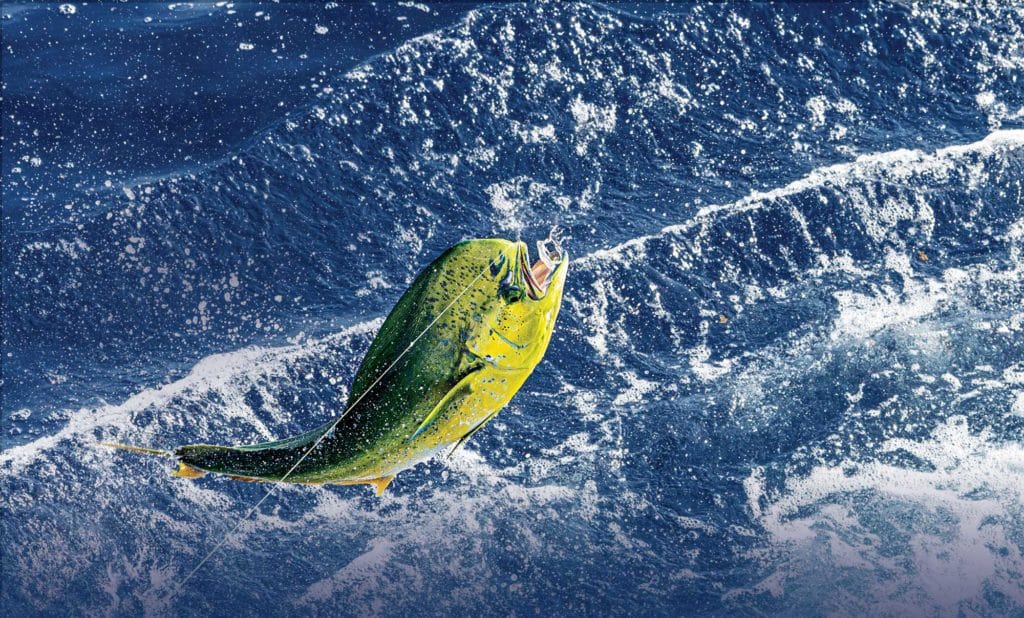
Present in most oceans, these -remarkable pelagic game fish respond well to a variety of tactics, including trolling with rigged baits or artificials, live-baiting, and casting lures or flies. However, success usually depends on finding the fish, which entails covering water and looking for telltale signs, such as frigate birds hovering, or gulls or terns diving and dipping, and -also locating weed lines or other -floating debris dolphin seek for cover and foraging options.
Life in the Fast Lane
“Dolphin are the most fascinating animals I’ve ever worked with,” says Don Hammond, who served as a marine fisheries biologist with the South Carolina Department of Natural Resources for 35 years and started the dolphin tagging project that, in 2006, grew into the Dolphinfish Research Program (DRP). “They are ready to reproduce at just three months of age, spawn multiple times per year, and grow to 40 pounds or more in only 12 months.
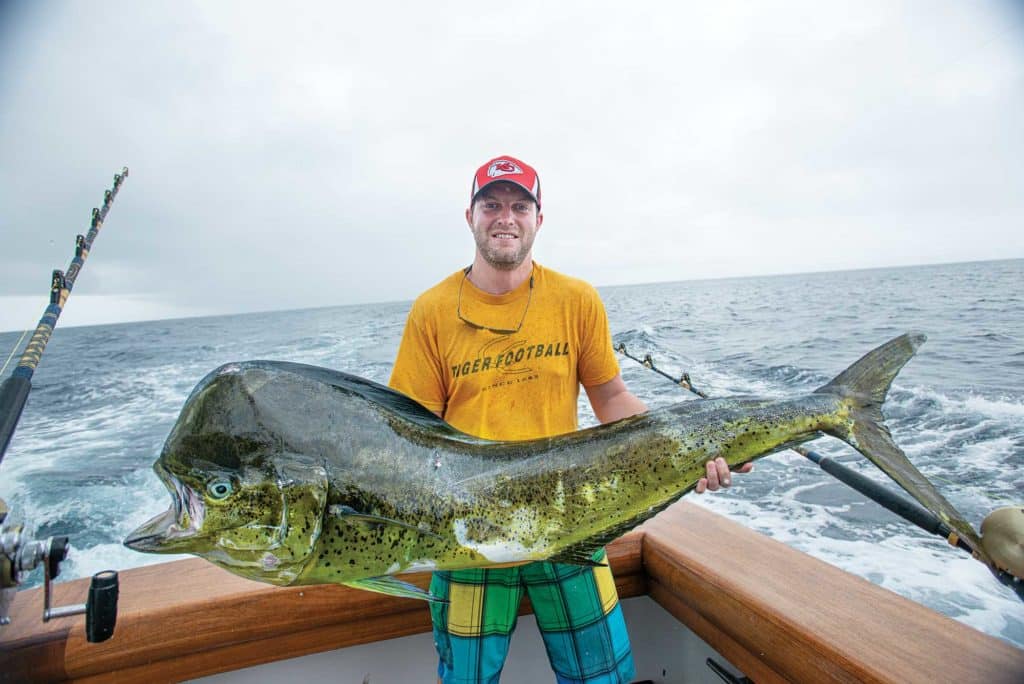
“In fertile waters with an ample food supply, dolphin could grow quite large. One caught by Dennis Braid at Tropic Star Lodge in Panama was over 6 feet long and unofficially weighed 60 kilos—that’s 136 pounds! But -because they are a preferred prey of other -predators, like marlin, only a small -percentage live long enough to reach their maximum size.”
Astounding Migrations
Hammond says dolphin are rarely found in water colder than 62 degrees or hotter than 84 degrees, and as the Atlantic has slowly warmed in -recent years, the fish are pushing farther north during their seasonal migrations.
Data compiled by the DRP sheds light on the migration patterns of this popular species, and the use of miniature pop-up satellite archival tags (PSATs) is providing eye-opening discoveries. For instance, one fish carrying a PSAT dived to 836 feet in the Gulf Stream, and another tagged off South Florida was recaptured off New York 10 days later. The only dolphin to carry a PSAT for a full six months was tagged off Charleston, South Carolina. It traveled to the waters off Long Island, New York, circumnavigated the Sargasso Sea, and was in La Mona Passage between the Dominican Republic and Puerto Rico when the tag finally detached.
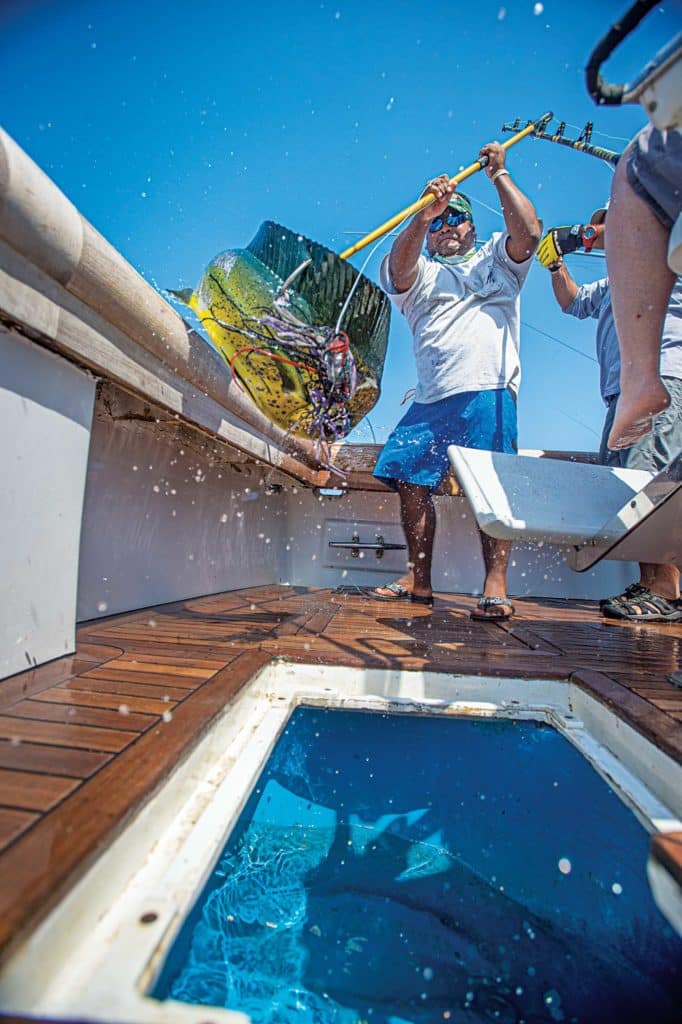
Information gathered by the DRP has helped create a calendar to predict when large bodies of dolphin will appear in the Caribbean, the Bahamas, and along the East Coast of the US each year. “Dolphin show up off the Florida Keys in late March,” Hammond says. “In early April, South Florida sees its largest influx of fish start to show up. At the same time, dolphin appear in numbers in northern Florida and the Bahamas. This simultaneous arrivals has to do with fish from the different areas arriving via slightly different routes through the Caribbean, the Bahama Bank, and across the Gulf Stream.
“The first wave of dolphin hits South Carolina waters around the third week of April, then goes north, arriving off the Outer Banks by early May, where the fish linger for more than a month before continuing northward, staging and foraging in the Mid-Atlantic Bight from mid-June to late September. If the water remains warm, they remain in the Northeast canyons well into October,” Hammond says.
Population Sources
Hammond goes on tao explain that he believes there are three sources of dolphin that move up the East Coast. The fish found off the Keys early in the season are mostly from the Gulf of Mexico cohort, believed to come from the Yucatan. Upon reaching the Loop Current, the fish split up, and one group rides north toward Louisiana, where some split again and head east or west, while the rest moves into the Florida Straits.
A second source group gets to Florida waters via the Old Bahama Channel, passing the Virgin Islands and the northern coasts of Puerto Rico and Cuba, then passing the Cay Sal Bank to reach the Gulf Stream and enter US waters somewhere around Key Largo or Miami.
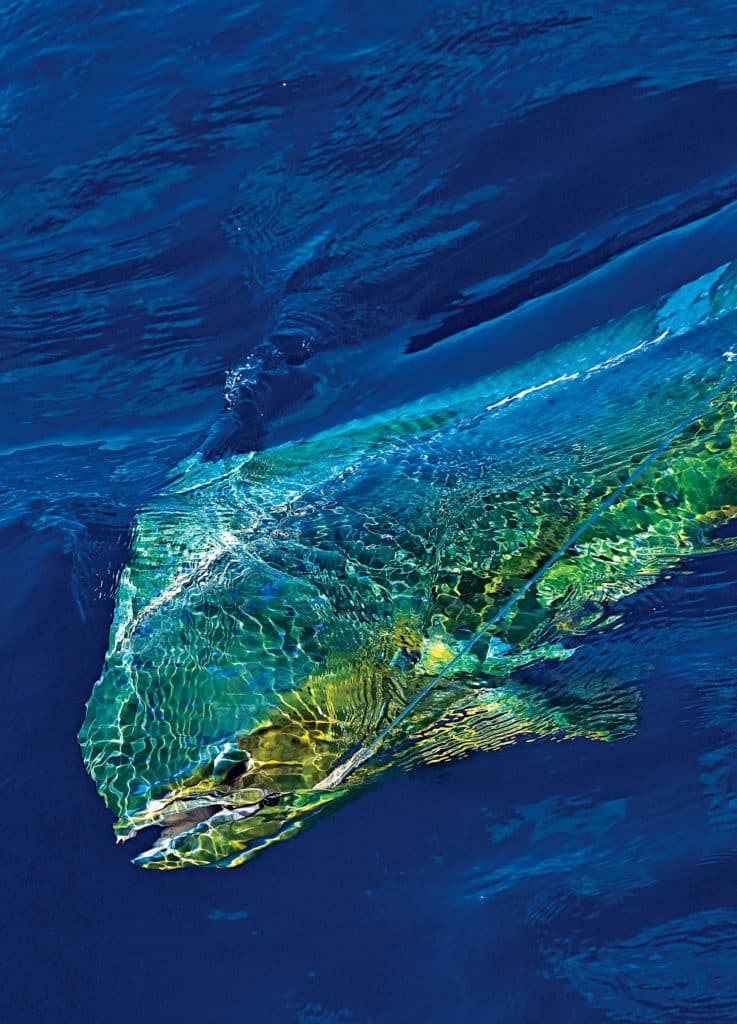
A third source group rides the Antilles Current up the east side of the Bahama Bank before merging into the Gulf Stream east of Fort Pierce, Florida, and continuing north up the Eastern Seaboard.
Conservation Considerations
When a hot dolphin bite is on, filling the fish box becomes quite easy. But as ubiquitous as dolphin often appear to be, they are still a fragile resource that must be conserved and protected. If you hope to continue enjoying great dolphin fishing in the future, be mindful of size and bag limits, and switch to catch-and-release—perhaps increasing the challenge by casting topwater plugs or flies—once you have caught enough fish to take home for a meal or two. Consider also getting involved with tagging and research efforts like the Dolphinfish Research Program, which is open to participation by private-boat anglers and for-hire vessels everywhere the fish swim.
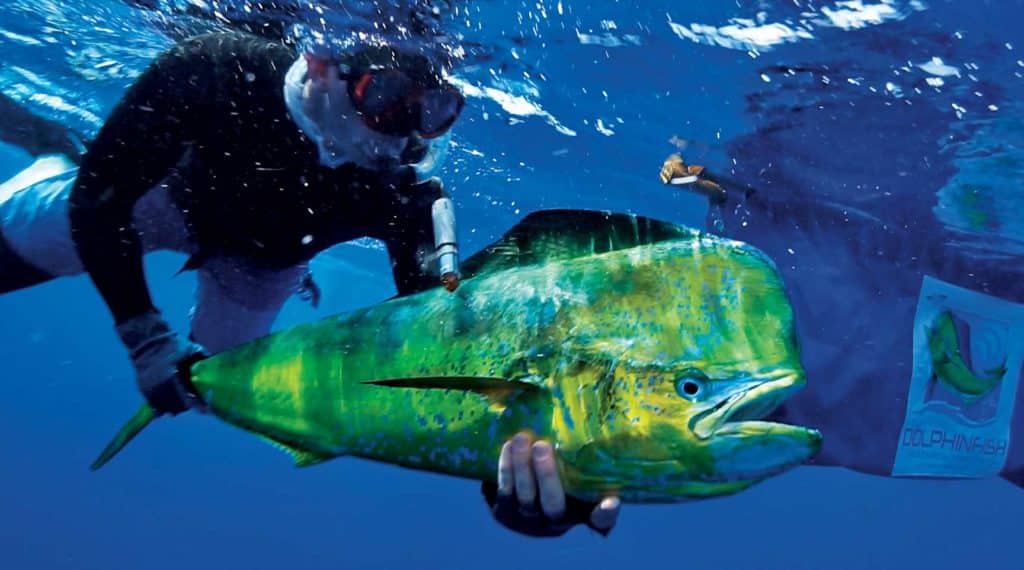
Dolphin-Tagging Efforts
The future of many gamefish lies in expanding the database of knowledge and applying what is learned to modern management techniques. Some of the most groundbreaking research is being done by privately funded organizations such as Beyond Our Shores Foundation, which is the new home of the Dolphinfish Research Program (DRP), the world’s largest international mark-and-recapture program studying the movements, life-history patterns, and population dynamics of the common dolphinfish. As of January 1, 2020, the DRP has attracted nearly 5,000 participants and tagged 27,750 dolphin. With donations from individuals, corporations—which include AFTCO and Grady-White Boats—and organizations such as the Guy Harvey Ocean Foundation, the DRP is greatly expanding the depth and breadth of its data, much of which is published in its monthly digital newsletter available to subscribers. Anglers are invited to join the research by requesting tags, tagging fish and reporting tag recoveries. To get involved or help support this effort, visit dolphintagging.com
.









